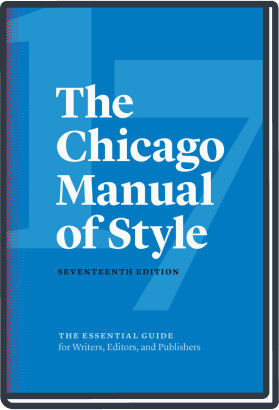BibGuru Chicago Citation Generator
Cite websites, books, articles, ...

Stress-free and accurate citations with the BibGuru Chicago citation generator
| 🚀 Fast | 👌 Simple and intuitive interface |
| 🎓 Cite in Chicago & many other styles | 🥇 Most accurate citation data |
Getting citations and reference lists done correctly can be very confusing and time-consuming. That's why we developed BibGuru—to let you concentrate on your writing instead of stressing over how to format your references properly. We believe students shouldn't have to spend hours manually entering information or risk losing points due to citation errors.
BibGuru is a quick and easy-to-use Chicago citation generator built with students in mind. Its efficient search tool lets you find books, websites, and journal articles and instantly add them to your bibliography. Start citing now:

I want to cite a ...
What is the Chicago citation style?
The Chicago format was developed by the University of Chicago Press in 1906. The first edition of the Chicago Manual of Style, a compilation of the typographical rules in force at the University of Chicago Press, was one of the first editorial style guides published in the US and has largely impacted research methodology standardization, particularly citation style. The Chicago Manual of Style is in its 18th edition today.
The style guide specifically focuses on American English and also deals with aspects of editorial practice, including grammar and usage, as well as document preparation and formatting. For citations, the Chicago style offers authors the choice between two formats:
- The notes and bibliography system: Preferred by many working in the humanities (literature, history, the arts,..). Sources are cited in numbered footnotes or endnotes in the text and listed in a separate bibliography.
- The author-date system: Often used in the sciences and social sciences. Sources are briefly cited in the text (usually in parentheses, author's last name and year of publication), and matched up with an entry in a reference list with full bibliographic information.
Aside from the use of numbered footnotes vs. parenthetical citations in-text, the two systems share a similar style. If you are not sure which system to use in your paper, ask your instructor. Using the correct system can have a great impact on your grade, so be sure clarify that before starting with your paper.
How to cite in the notes and bibliography system
Instead of naming the authors in the text, which can be distracting to the reader, numbers are used to denote citations in the notes and bibliography system. These numbers in the text are linked to a full reference in footnotes or endnotes and in your bibliography. Cited publications are numbered in the order in which they are first referred to in the text. Please make sure to follow the rules below when citing in this system:
- Check whether footnotes or endnotes are required for your work. Footnotes are found at the bottom of a page and endnotes are located at the end of a document, or sometimes at the end of a chapter or section.
- All notes end with a full stop (in both footnotes/endnotes and bibliography).
- In the footnotes, author names should be first name followed by last name, for example 'Gregg Levoy'. In the bibliography, author names should be last name followed by first name, for example 'Levoy, Gregg'.
- If there are up to six authors of a source, give their names in your references in the order they are shown in the source. For six or more authors, give the name of the first three authors, followed by 'et al.' in the footnotes, but list all the authors in the bibliography. The first author's name is given in the bibliography as last name, first name, but other authors are written as first name last name.
- Italicize the title of books, journals and websites. Titles of articles, chapters, unpublished sources and web pages within a website are placed within double quotation marks.
- In your bibliography, also include sources you have read but not cited, in addition to your footnotes/endnotes.
- The first time you cite a source give full details in the footnotes/endnotes. Subsequent entries of the same source can be abbreviated to the author's last name and the first few words of the title, plus a page number number.
- When citing internet addresses (URLs) and Digital Object Identifiers (DOI), the URL is given in full; the accessed date is placed before the URL; and DOIs should be used if they are available as they are a permanent locator, instead of URLs. If using a DOI, you do not need to give the accessed date.
- Formatting: The first line of footnotes should be indented by 1/2 inch (1.3cm) and subsequent lines are not indented. For the bibliography the first line of references is not indented, but the second and subsequent lines have a hanging indent of 1/2 inch (1.3cm).
The citation order for a book in the notes and bibliography system would be:
- Author
- Title (in italics)
- Edition (only if it is not the first edition)
- Publisher, year of publication (all in round brackets in footnote, but not in bibliography)
- Comma then page reference in footnote
Footnote:
David Halliday, Robert Resnick, and Jearl Walker, Fundamentals of Physics (Wiley, 2013), 18.
Bibliography:
Halliday, David, Robert Resnick, and Jearl Walker. Fundamentals of Physics. Wiley, 2013.
Here is the citation order and an example for a citation of a journal article:
- Author
- Title of article (in double quotation marks)
- Title of journal (in italics)
- Volume number, issue number
- Year of publication (in round brackets)
- Colon then page reference in footnote or page span in bibliography
Footnote:
Peter Leach, "James Paine's Design for the South Front of Kedleston Hall: Dating and Sources," Architectural History 40 (1997): 160.
Bibliography:
Leach, Peter. "James Paine's Design for the South Front of Kedleston Hall: Dating and Sources." Architectural History 40 (1997): 159-70
How to cite in the author-date system
As with APA or Harvard style, the Chicago author-date format uses in-text citations comprising the author's name and year of publication (and specific page reference if required). A reference list (rather than a bibliography) at the end of the work provides full bibliographical details for the sources used, listed in alphabetical order.provides full bibliographical details for the sources used, listed in alphabetical order.
The major difference between the two systems in the form of the references is the position of the year of publication. In the notes and bibliography system the year comes towards the end of the reference, whereas in the author-date system it is on the second place in the reference, right after the author's name.
Example for entry in reference list:
Axler, Sheldon. 2017. Linear Algebra Done Right. New York: Springer.
Although the specific rules of the Chicago citation style may seem complex, there's no need to worry about making mistakes when you use BibGuru. Our Chicago citation generator is designed to create fast and accurate citations effortlessly. If you want to learn more about Chicago citations, check out our Chicago citation guides, which provide detailed information on the various publication types.
FAQs
🖌️ What is the Chicago style used for?
The Chicago style is used mainly in the humanities (literature, history, the arts,..) or in the social sciences (business). While the notes and bibliography is mainly used in the humanities, the author-date system is preferably used in the social sciences.
🙌 Is the Chicago style double-spaced?
The text in your paper should be double-spaced. Footnotes and bibliographies are single-spaced, but need to have a double-space in between the entries.
📘 Does the Chicago style need a title page?
Yes, the Chicago style has guidelines for a title page. Some of the key guidelines are:
- The title should be centered a third of the way down the page
- Other information (your name, class, etc.) follows several lines later
- All text is aligned in the center and double-spaced
- No page number is included on the title page
🔢 Does the Chicago style use page numbers?
In the notes and bibliography system, you always include page numbers. In in-text citations you give a page number when you are paraphrasing or quoting directly from the text, or referring to information from a specific section.
👩💻 Does the Chicago style have headers?
While The Chicago Manual of Style does not include a prescribed system for formatting headings and subheads, it makes several recommendations. You can read some of them here.